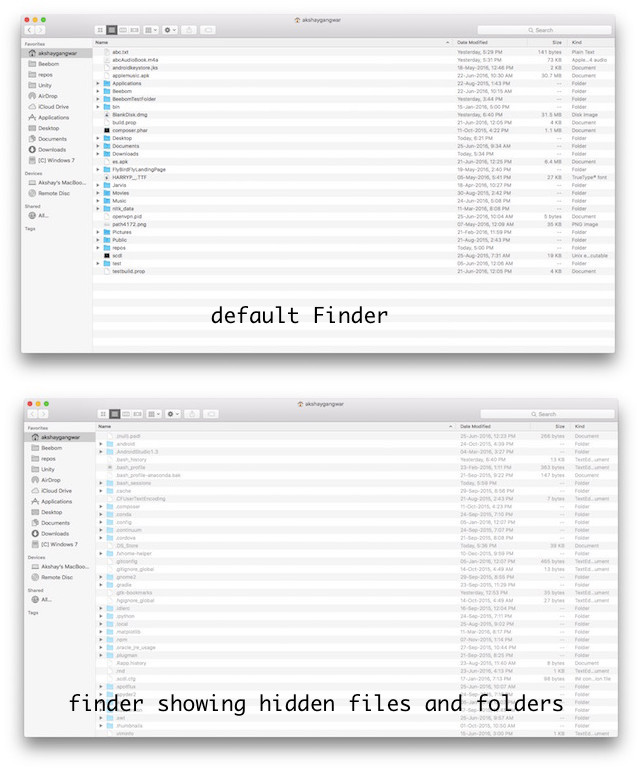
Apple released the new iPhone 14 Pro yesterday. Despite its nearly identical appearance to the iPhone 13 Pro (especially from the back), significant upgrades abound throughout the device. In fact, the iPhone 14 Pro stands out as one of the most exciting iPhones in recent memory. So, if you’re deliberating whether the new smartphone warrants the $999 price tag, here’s a detailed comparison between the iPhone 13 Pro and iPhone 12 Pro.
iPhone 14 Pro and iPhone 13 Pro Comparison
We’ve compared the iPhone 14 Pro and iPhone 13 Pro across various categories, covering design, specs, cameras, and user interface elements (you’ll understand why). As always, you can use the table of contents below to navigate this article.
Quick Specs Comparison
| iPhone 14 Pro | iPhone 13 Pro | |
|---|---|---|
| Dimensions | 147.5 x 71.5 x 7.85 (mm) | 146.7 x 71.5 x 7.65 (mm) |
| Weight | 206g | 204g |
| Display | 6.1-inch, Super Retina XDR 460ppi 120Hz Always on Display 2000 nits peak outdoor brightness 1600 nits peak HDR brightness |
6.1-inch, Super Retina XDR 460ppi 120Hz 1000 nits max brightness (typ) 1200 nits peak HDR brightness |
| Processor | A16 Bionic | A15 Bionic |
| Storage Options | 128GB, 256GB, 512GB, 1TB | 128GB, 256GB, 512GB, 1TB |
| Ingress Protection | IP68 | IP68 |
| Rear Camera | 48MP, f/1.78 (Primary) 12MP, f/2.2 (Ultra wide) 12MP, f/2.8 (Telephoto) 3x optical zoom in, 2x optical zoom out Digital zoom up to 15x |
12MP, f/1.5 (Primary) 12MP, f/1.8 (Ultra wide) 12MP, f/2.8 (Telephoto) 3x optical zoom in, 2x optical zoom out Digital zoom up to 15x |
| Front Camera | 12MP, f/1.9 | 12MP, f/2.2 |
| Connectivity | 5G (sub-6GHz) WiFi 6 (802.11ax) Bluetooth 5.3 Dual frequency GPS Emergency SOS via Satellite |
5G (sub-6GHz) WiFi 6 (802.11ax) Bluetooth 5.0 |
Design
Beginning with design, the iPhone 14 Pro retains the rear design of the iPhone 13 Pro. It features a frosted matte finish on the rear glass, a glossy finish around the camera module, and a stainless steel frame, which is attractive but prone to fingerprints.
Both phones have three rear cameras, with Apple upgrading the primary camera to a 48MP shooter this year, resulting in a larger camera bump.
However, the most significant design change is evident upfront. The notch of the iPhone 13 Pro has been replaced with a pill-shaped cutout. Apple has reduced the size of the Face ID array by 30% compared to last year, resulting in a considerably smaller pill. The bezels surrounding the display are slightly thinner on the iPhone 14 Pro, according to Apple, though the difference is minimal. The screen size of the iPhone 14 Pro is 15.54cm, compared to 15.40cm on the iPhone 13 Pro.
The Lightning port remains at the bottom, along with the speaker and microphone grilles. Button placement remains unchanged, with no surprises regarding the power button, volume buttons, or alert slider. Everything remains identical to previous iPhone models.
Display
The iPhone 14 Pro display closely resembles that of the iPhone 13 Pro, with minor hardware differences. Both phones feature a 6.1-inch screen (6.7-inch for the Pro Max models) and a pixel density of 460 ppi. Despite variations in resolution, the 14 Pro’s screen is slightly larger.
However, the iPhone 14 Pro distinguishes itself from the 13 Pro with its enhanced screen brightness. While the 13 Pro offered typical display brightness of 1000 nits and HDR brightness of 1200 nits, the iPhone 14 Pro boasts HDR brightness reaching 1600 nits and up to 2000 nits in outdoor settings for optimal visibility.
Both displays support 120Hz ProMotion technology. However, the iPhone 14 Pro features a new LTPO panel, allowing the display to operate at 1Hz for the long-awaited Always on Display feature. The phone dims the screen and reduces the refresh rate to 1Hz for viewing notifications and the time without fully waking the device. Apple also confirms that the AOD on the iPhone 14 Pro supports live notifications, ensuring real-time updates for timers or game scores on the lock screen.
Performance Differences: iPhone 14 Pro vs. iPhone 13 Pro
While non-pro versions of iPhone 14 retain the A15 Bionic from last year’s iPhone 13 series, iPhone 14 Pro introduces the new A16 Bionic processor. This latest chip operates on a 4nm process, ensuring enhanced efficiency and speed compared to the A15 Bionic, which operated on a 5nm process.
The A16 Bionic features a 6-core CPU, mirroring the configuration of the A15 Bionic, comprising 2 high-performance cores and 4 high-efficiency cores. Accompanying this is a 5-core GPU responsible for all graphical requirements of iPhone 14 Pro. Additionally, there’s a 16-core Neural Engine enabling functionalities such as the new Photonic engine for improved photography and various machine learning and AI capabilities on iPhone.
Aside from the ISP, the A16 Bionic boasts a Display Engine facilitating features such as the 1Hz refresh rate for the Always On Display, the higher brightness of 2000 nits, and anti-aliasing along with other animations running throughout the system, particularly on the Dynamic Island.
While real-world performance of the new A16 Bionic remains to be seen, it’s likely to be among the fastest smartphone processors, surpassing the A15 Bionic it succeeds. However, it’s worth noting that the A15 Bionic remains a robust smartphone chipset with enduring performance.
Dynamic Island on iPhone 14 Pro
Throughout this article, we’ve discussed Dynamic Island extensively, but what exactly is it? With the new pill + hole cutout on the iPhone 14 Pro’s display, Apple introduces a fresh set of UI elements and user interactions, enhancing the iPhone’s intuitiveness and user-friendliness significantly. This innovation not only renders the pill acceptable but also desirable.
The iPhone 14 Pro (and Pro Max) utilize the area surrounding the pill-shaped cutout for displaying notifications, presenting information that would typically require an additional screen, and more. Apple’s demonstrations showcase various elements within Dynamic Island, including AirDrop notifications, Face ID animations, now playing music, timers, and additional features.
The Dynamic Island allows users to quickly access and control the app running within it by tapping and holding. This feature enables easy control of music, podcasts, timers, etc., without leaving the current app. The shape of the Dynamic Island varies based on the displayed information.
Additionally, it replaces pop-downs, such as those triggered by adjusting the alert slider or connecting AirPods. These prompts will now appear in the Dynamic Island on the iPhone 14 Pro, reducing their intrusiveness.
Cameras
Regarding the cameras, the iPhone 14 Pro brings significant improvements. Its primary camera setup features a 48MP main camera alongside 12MP ultra-wide and telephoto lenses. Through quad-pixel binning, this main camera produces 12MP photos while capturing more light. Additionally, the phone offers a 2x zoom option using a cropped sensor.
Comparatively, the iPhone 13 Pro had a 12MP triple rear camera setup and lacked a dedicated 2x zoom button (though digital zoom was possible).
On the front, the new iPhone features the same 12MP sensor, but the aperture has been increased to f/1.9 from f/2.2 in the iPhone 13 Pro. This means selfies from the iPhone 14 Pro should come out better in low light. Additionally, the new iPhone introduces autofocus to the selfie camera for improved focus and detail in group selfies.
Dual SIM and eSIM
iPhones have supported dual SIM with a nano SIM + eSIM setup in most countries. However, the iPhone 14 Pro removes the SIM tray from US models, limiting US customers to only using an eSIM.
Conversely, the iPhone 13 Pro included a SIM tray for a nano SIM card and supported an additional eSIM.
Pricing
The iPhone 14 Pro launches at $999 for the 128GB variant, with the Pro Max at $1099 for the same storage. Apple maintains last year’s pricing, despite rumors of an increase for the new Pro model.
In India, the iPhone 14 Pro starts at Rs. 1,29,900, while the Pro Max begins at Rs. 1,39,900. Last year’s iPhone 13 Pro debuted at Rs. 1,19,900, with the Pro Max at Rs. 1,29,900.
iPhone 14 Pro: Worth the Upgrade?
Regarding the iPhone 14 Pro’s value, it’s subjective. If you already own an iPhone 12 or later, upgrading isn’t necessary as your current phone should suffice for a few more years. However, if you desire the iPhone 14 Pro’s new design, Dynamic Island feature, and upgraded camera system, it could be worthwhile.
Conversely, if you’re using an older iPhone, such as the iPhone XR, upgrading to the iPhone 14 Pro could be a logical choice. The newer model offers a faster processor, significantly improved cameras, and a superior display boasting higher brightness and a ProMotion 120Hz refresh rate.
iPhone 14 Pro vs iPhone 13 Pro: Your Preference?
Whether you’re contemplating switching from the iPhone 13 Pro or upgrading from an older iPhone, like myself, the iPhone 14 Pro introduces several enticing features. These include a revamped design, dynamic island UI elements, an enhanced 48MP camera, and the latest A16 Bionic processor, all while maintaining the starting price of $999. Which model appeals to you more, the iPhone 14 Pro or the iPhone 13 Pro? Share your thoughts in the comments.

Pritam Chopra is a seasoned IT professional and a passionate blogger hailing from the dynamic realm of technology. With an insatiable curiosity for all things tech-related, Pritam has dedicated himself to exploring and unraveling the intricacies of the digital world.



